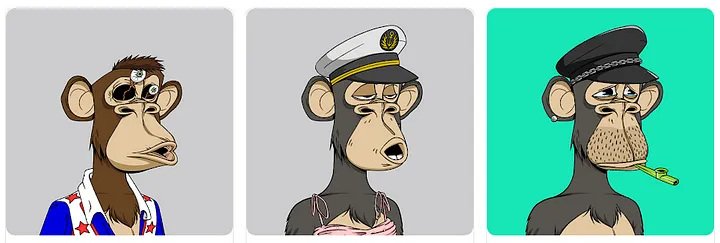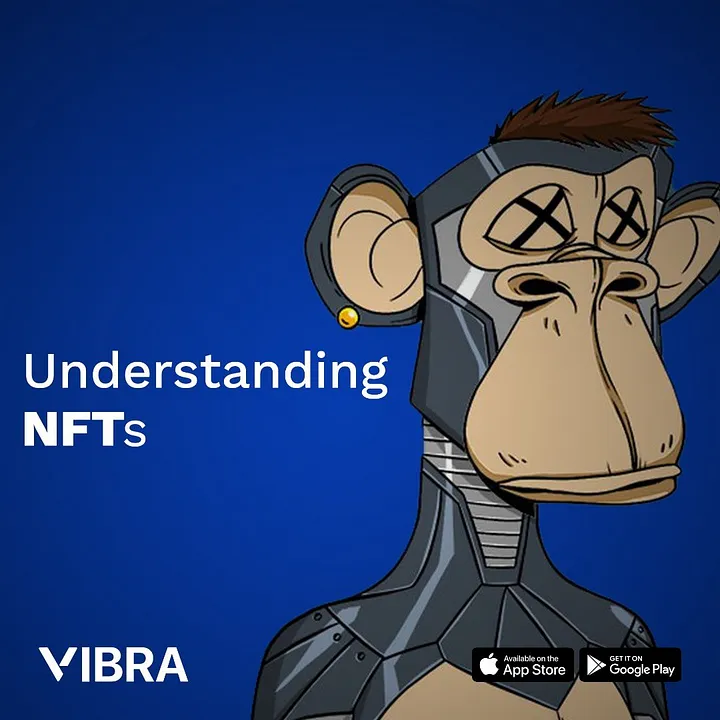The conversations around NFTs are beginning to get blurry — Bored Apes, Cryptopunks, Minting, Gas Fees, Sotheby and lots of names are dropping everywhere alongside mind-blowing figures, it makes you wonder if there is some secret to comprehending NFT no one is sharing.
NFTs are growing rapidly and despite their complexity, they are easy to comprehend and invest in. They, like any other investment assets, demand thorough investigation before investing. Buying NFT is like collecting art. Historically, art collectors sought out the rarest and most unusual works.
If you have never heard about NFTs or have managed to avoid learning about them, this article will help you comprehend them completely.
Some interesting NFT statistics
In December 2021, an NFT titled ‘The Merge’ was sold for $91.8 million on Nifty Gateway, making it the most expensive single NFT sale.
Another popular sale of 2021 was that of Beeple’s everyday digital art sold for $69 million.
Jack Dorsey, Twitter’s co-founder sold his first-ever tweet as NFT for $2.9 million in 2021.

Image obtained from Twitter.com
What exactly are NFTs? Who is making them? Who is buying them?
NFT defined
The full meaning of NFT is Non-Fungible Token, which means indivisible, irreplaceable, and unique token on the blockchain.
Simply understood, an NFT is a digital asset issued on the blockchain. They are similar to cryptocurrencies because they are tokens issued on the blockchain, and different because they are unique.
NFT can be used to represent a painting, a song, a patent, a film, a photo, GIF, a meme, digital artwork, mobile game characters, a tweet, tickets, and anything unique, and recordable. Because NFTs are rare and possess natural collectable attributes, it is easy to trade them, auction them or keep them as memorabilia.
What are tokens?
Cryptocurrencies are digital currencies issued on the blockchain and are generally divided into two categories: native coins and tokens.
Native coins such as BTC, and ETH, are created on their own blockchain and transactions are recorded directly on the mainchain.
Tokens are cryptocurrencies attached to a pre-existing blockchain (which has its own native coin) and tokens use smart contracts to record the transactions.
Tokens can be divided into two types:
Homogenous
Non-homogenous
Homogeneous tokens or Fungible Token (FT) can replace each other and can be close to infinitely split tokens. For example, there is essentially no difference between one SHIBA crypto in the wallet of Mr Smith and another in the wallet of Ms Jane. Similar to how two different $10 bills can be exchanged for a single $20 bill. This is the fungibility and homogenization of currency.
Non-homogeneous tokens, namely NFTs, are unique and indivisible tokens, such as encrypted cats and tokenized digital tickets. It is equivalent to having a special kind of dollar created with a unique number and colour that can never be found on another dollar.
Therefore, compared to FT, the key innovation of NFT is to provide a way to assign a unique identifier to digital assets (that is, assets that exist in the digital world as an original or a replica of a physical asset). This unique identifier will help to mark ownership of digital assets and this ownership can exist in centralized services or outside the centralized library.
Ownership of NFT
The ownership of the NFT does not prevent others from inspecting it or reading it or even copying it. You can have the image of an NFT on your phone (just like the images embedded in this article).
If an art collector owns the original Monalisa painting, there will be a certificate of authenticity for such purchase. The owner can choose to display Monalisa at functions, and copies of the painting can be bought at any street corner or gallery. However, the original painting will only belong to the one who owns the certificate of authenticity.
Likewise, NFT displays the digital file of an asset alongside the certificate of authenticity showing ownership rights and other important details. Because they are programmed with smart contracts, the transfer of ownership in an NFT is highly seamless compared to other forms of rare art.
History of NFT
Before Ethereum Meni Rosenfeld published a paper on December 4, 2012, introducing the notion of “Colored Coins” on the Bitcoin blockchain. They were created as bitcoins with individual unique marks. Coloured coins were not popular. In May 2014, Kevin McCoy and Anil Dash built the first popular NFT called Quantum, using a video clip created by McCoy’s wife, Jennifer. During a live presentation for the Seven on Seven conferences at the New Museum in New York City, McCoy registered the video on the Namecoin network and sold it to Dash for $4. The technology was dubbed “monetized graphics” by McCoy and Dash.
Ethereum-based NFTs Three months after the Ethereum blockchain was created, the first NFT project, Etheria, was launched and showcased at DEVCON 1 in London, Ethereum’s first developer conference. Until March 13, 2021, when revived interest in NFTs ignited a buying frenzy, the majority of Etheria’s 457 purchasable and tradable hexagonal tiles went unsold for more than five years. All tiles from the current and previous versions, each hardcoded to 1 ETH ($0.43 at the time of launch), were sold for a total of $1.4 million in less than 24 hours. Following the introduction of many NFT initiatives that year, the ERC-721 standard, first suggested in 2017 via the Ethereum GitHub, acquired currency. Popular NFT collections that emerged include CryptoPunks and Cryptokitties. In 2017, the Ethereum blockchain got clogged by the rise in traffic generated by Cryptokittens — a game-like platform where players purchase, collect, breed, and sell virtual cats. This was the first NFT boom recorded in the crypto space until the explosion in 2021.
Beyond Ethereum There are several other platforms that enable NFTs besides Ethereum. Blockchains like Solana, Tezos, Cardano and Flow are getting on board with NFT-enabled platforms that support new standards for minting NFTs.
NFT use cases
1. NFT game: From Cryptokitties to Axie Infinity, the importance of NFT in the gaming industry cannot be overemphasised. Mobile games with play-to-earn models are using NFTs to represent in-game assets. For example, NFT can be used to represent pets, weapon props, clothing, land, currency, and other items within the game. This allows players to profit from their games by transferring such in-game assets to the NFT marketplace, where they are sold. The smash-hit crypto cat in 2018 uses NFT technology. They give each cat a special tag number to make it unique cat. Another example is the battle equipment ROBOT in the recently popular game GAMEE which is created as an in-game NFT.
2. Digital art and generative art collections: The most popular use case for NFT is in digital art and digitally generated collections of NFT. Cryptopunks and Bored Ape Yacht Club (BAYC) are two popular examples.

BAYC collection on OpenSea
BAYC is a collection of 10,000 NFTs showing unique images of apes that were generated from 170 distinct ape features. Popular celebrities like Gary Vee, Jay-Z, Snoop Dogg, Faze Banks, Logan Paul, The Chainsmokers, etc. are all known collectors of these NFTs.
3. Ownership and Intellectual Property: NFT can represent a painting, a song, a patent, a film, a photo, or other intellectual property rights in creative work. By documenting these works on the blockchain as NFTs, they remain authentic, with unalterable records. NFT plays the role of a patent office with a certificate of authenticity that is identifiable and transferable.
4. Physical assets: Real-world assets can be tokenized as NFT. It can be used in financial markets such as asset circulation to aid divisibility.
5. Records and identification: NFT can also be used to verify identity and birth certificates, driving licenses, academic certificates and other important personal documents. These can be safely stored in digital form to prevent abuse or tampering with data. Financial documents like invoices, orders, insurance, bills, etc. can be converted into NFT for trading.
6. Ticketing and sports memorabilia: Concert tickets, sports, movies, drama tickets, etc., can all be marked with NFT. All tickets are the same, but the seat numbers are different. Sports and games collectables created as NFT is gaining huge traction with fans trading game cards on marketplaces

Statue of LeBron on OpenSea
What’s next with NFT?
As more firms around the world adopt blockchain technology, the applications of blockchain technology and its derivatives grow. In 2021, we saw how businesses may use NFTs to increase brand visibility and consumer loyalty. Beyond that, NFT’s immersion in the metaverse is evolving, and 2022 seems to be the year for NFT games and the Metaverse’s extended realities.
Watch out for our next piece in the NFT series, which will explore the various NFT marketplaces and how to invest in NFTs.
Follow us on our socials:
Instagram — @Vibraafrica
Twitter — @Vibraafrica
Telegram community — https://t.me/VibraAfrica
